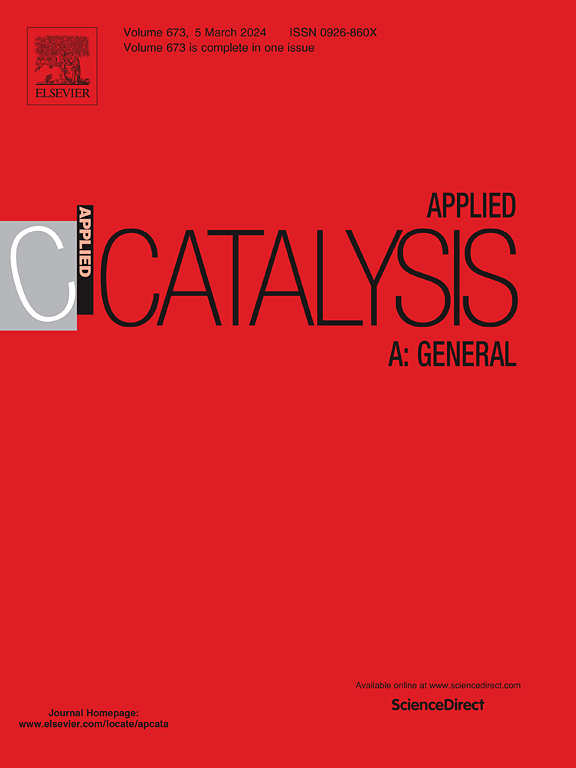Efficient immobilization of sulfonic acid groups in the backbone of aluminoborate-based molecular sieve for the expeditious synthesis of 14-aryl-14H-dibenzo[a,j]xanthene and α-aminonitrile derivatives under solvent-free conditions
IF 4.7
2区 化学
Q2 CHEMISTRY, PHYSICAL
引用次数: 0
Abstract
Solid acid materials functionalized by sulfonic acid groups (–SO3H) is receiving a great deal of attention recently because of the effective substitute for conventional liquid mineral acids. In this work, the controllable –SO3H acidic sites were successfully immobilized in the backbone of aluminoborate-based molecular sieve (PKU1), which were well-confirmed by some physicochemical characterizations. Under solvent-free reaction condition, the as-prepared PKU1-SO3H solid acids exhibit both high activity and chemical stability for the expeditious synthesis of 14-aryl-14H-dibenzo[a,j]xanthenes and α-aminonitrile derivatives. Eight new crystal structure have been found and were also determined with single crystal X-ray diffraction method. A plausible reaction mechanism was proposed to interpret the key role of –SO3H active sites on the catalytic synthesis of 14-phenyl-14H-dibenzo[a,j]xanthene derivatives. This work provides an available candidate in the environmentally benign catalysis and a helpful understanding on the reaction mechanism using solid acid catalyst for selective synthesis of some value-added compounds.
无溶剂条件下,硼酸铝分子筛骨架上磺酸基的高效固定化快速合成14-芳基- 14h -二苯并[a,j]杂蒽和α-氨基腈衍生物
磺酸基(-SO3H)功能化固体酸材料作为常规液体无机酸的有效替代品,近年来受到广泛关注。本文成功地将可控的-SO3H酸性位点固定在了硼酸铝基分子筛(PKU1)的骨架上,并通过一些物理化学表征得到了很好的证实。在无溶剂条件下,制备的PKU1-SO3H固体酸具有高活性和化学稳定性,可快速合成14-芳基-14 - h -二苯并[a,j]杂蒽和α-氨基腈衍生物。发现了8种新的晶体结构,并用单晶x射线衍射法进行了测定。提出了一种合理的反应机理,解释了-SO3H活性位点在催化合成14-苯基- 14h -二苯并[A,j]杂蒽衍生物中的关键作用。本研究为环境友好型催化剂提供了一个候选材料,并对固体酸催化剂选择性合成一些高附加值化合物的反应机理有了一定的了解。
本文章由计算机程序翻译,如有差异,请以英文原文为准。
求助全文
约1分钟内获得全文
求助全文
来源期刊

Applied Catalysis A: General
化学-环境科学
CiteScore
9.00
自引率
5.50%
发文量
415
审稿时长
24 days
期刊介绍:
Applied Catalysis A: General publishes original papers on all aspects of catalysis of basic and practical interest to chemical scientists in both industrial and academic fields, with an emphasis onnew understanding of catalysts and catalytic reactions, new catalytic materials, new techniques, and new processes, especially those that have potential practical implications.
Papers that report results of a thorough study or optimization of systems or processes that are well understood, widely studied, or minor variations of known ones are discouraged. Authors should include statements in a separate section "Justification for Publication" of how the manuscript fits the scope of the journal in the cover letter to the editors. Submissions without such justification will be rejected without review.
 求助内容:
求助内容: 应助结果提醒方式:
应助结果提醒方式:


